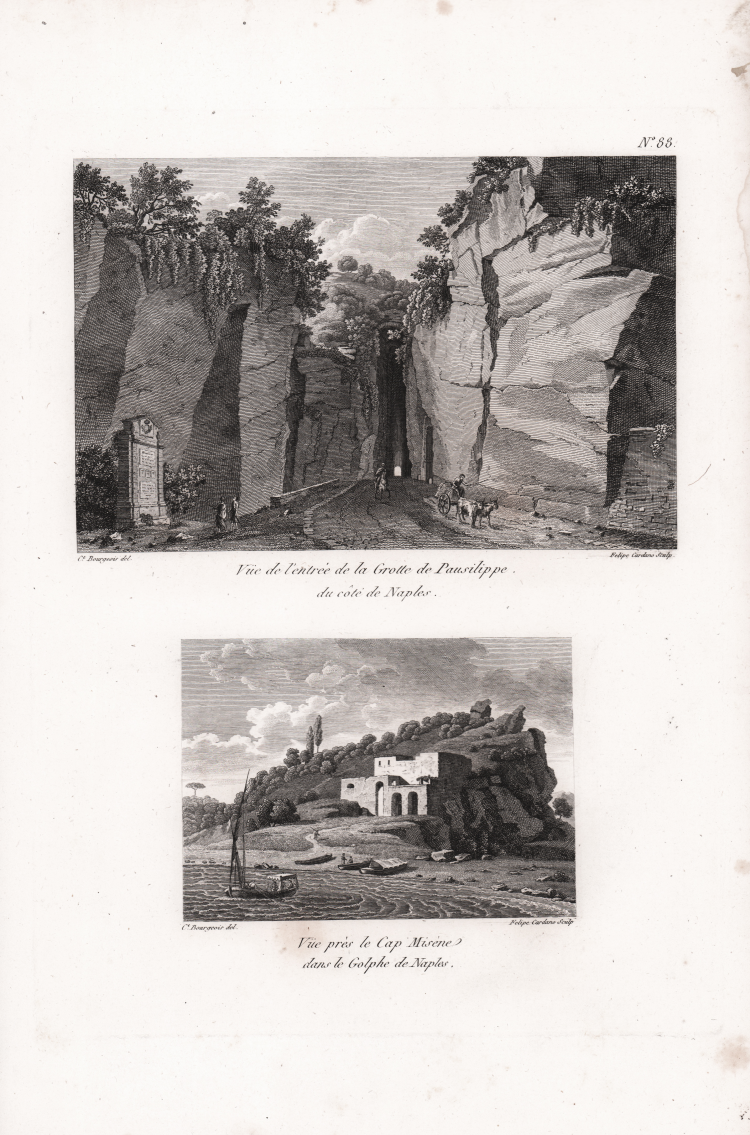


| Reference: | s44627 |
| Author | Florent-Constant BOURGEOIS |
| Year: | 1804 |
| Zone: | Naples |
| Printed: | Paris |
| Measures: | 244 x 330 mm |


| Reference: | s44627 |
| Author | Florent-Constant BOURGEOIS |
| Year: | 1804 |
| Zone: | Naples |
| Printed: | Paris |
| Measures: | 244 x 330 mm |
Florent-Constant BOURGEOIS (Guiscard, 1767 - Passy, 1841)
|
Florent-Constant Bourgeois, known as "Bourgeois du Castelet," was originally a military officer. Bourgeois devoted himself exclusively to art from the mid-1790s, perfecting his training in Jacques-Louis David's studio, where he specialized in landscapes and became above all an extraordinary draughtsman; Paul Marmottan, in his "Ecole française de peinture, 1789-1830," refers to his " grande pureté de style et l'exécution brillante de ses dessins, la plupart très remarquables, notamment ceux au lavis." Highly sought after and appreciated during his lifetime, Bourgeois received numerous artistic prizes and awards, a house in the Louvre, and the Legion of Honor in 1827. He lived at No. 3 quai Malaquais in Paris.
His activity as a painter is less well known today, yet he exhibited paintings in almost every Salon from 1791 to 1830, with only views of Italy for the period from the Revolution to the Consulate.
|
Florent-Constant BOURGEOIS (Guiscard, 1767 - Passy, 1841)
|
Florent-Constant Bourgeois, known as "Bourgeois du Castelet," was originally a military officer. Bourgeois devoted himself exclusively to art from the mid-1790s, perfecting his training in Jacques-Louis David's studio, where he specialized in landscapes and became above all an extraordinary draughtsman; Paul Marmottan, in his "Ecole française de peinture, 1789-1830," refers to his " grande pureté de style et l'exécution brillante de ses dessins, la plupart très remarquables, notamment ceux au lavis." Highly sought after and appreciated during his lifetime, Bourgeois received numerous artistic prizes and awards, a house in the Louvre, and the Legion of Honor in 1827. He lived at No. 3 quai Malaquais in Paris.
His activity as a painter is less well known today, yet he exhibited paintings in almost every Salon from 1791 to 1830, with only views of Italy for the period from the Revolution to the Consulate.
|